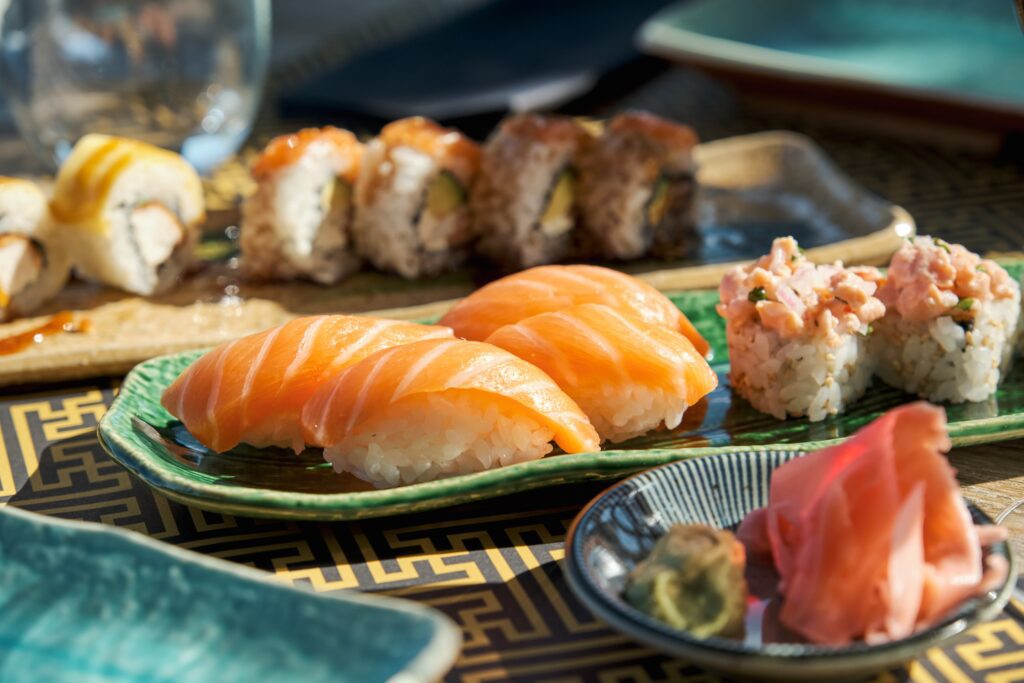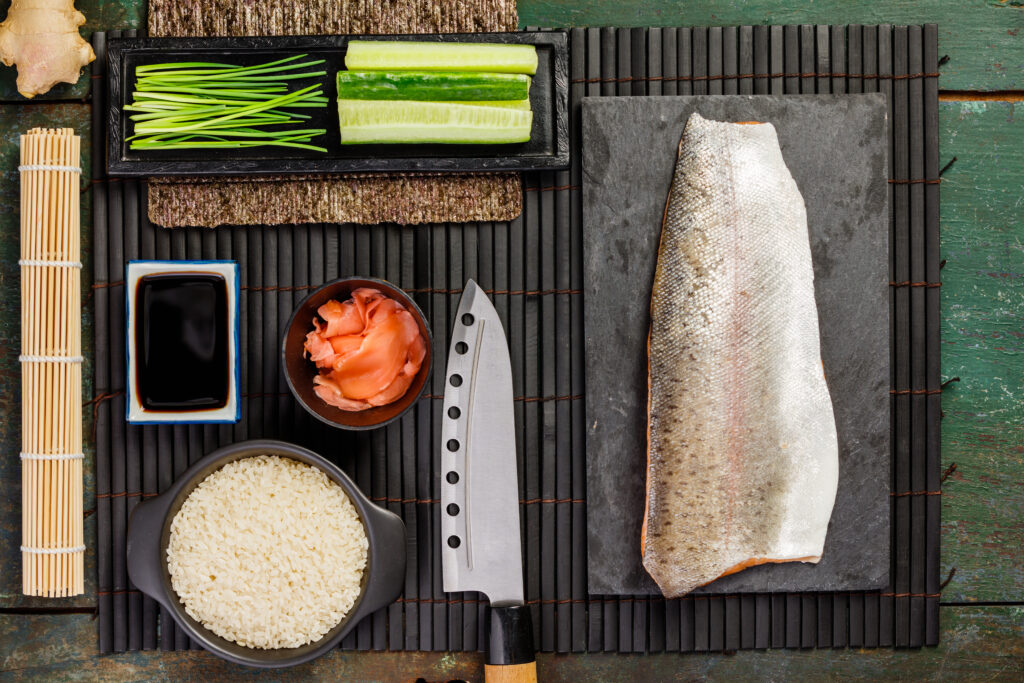The Evolution of Japanese Knife Skills: From Sushi to Steak
Japanese cuisine is renowned not only for its rich flavors but also for the artistry that goes into its preparation. Knife skills are a critical aspect of this artistry, as Japanese chefs have perfected the art of slicing and dicing for centuries. From delicate sushi cuts to the precise techniques needed for meat, knife skills in Japan have evolved tremendously, shaping the dining experience in profound ways. Let’s explore the journey of Japanese knife skills, from their historical roots to modern culinary applications, and how they continue to enhance the dining experience.
Importance of Knife Skills in Japanese Cuisine and Their Evolution
Knife skills in Japanese cuisine are essential, reflecting a deep respect for ingredients and an emphasis on precision. Unlike many cuisines where chopping and dicing are functional steps, Japanese knife skills aim to preserve the natural flavors and textures of each ingredient. In traditional dishes like sushi, the ability to slice fish thinly and cleanly is paramount. Over the years, these skills have evolved to accommodate different types of ingredients, including meat, as Japanese cuisine itself has diversified.
Japanese knife techniques emphasize the following:
- Precision – Every cut matters and influences the final presentation.
- Respect for Ingredients – Techniques are designed to enhance, not overpower, natural flavors.
- Efficiency – Skilled knife handling minimizes waste and maximizes yield.
Tradition of Japanese Knife Craftsmanship
Japanese knives have a long and respected history, deeply rooted in the craftsmanship of Samurai sword-making. Japanese blacksmiths, once makers of the revered Samurai swords, transitioned their skills to knife-making as Japan moved into more peaceful times. This craftsmanship, known as sakimono (cutting object), led to the creation of knives with an unmatched sharpness and durability.
Historical Roots and Connection to Samurai Swords
The forging process for Samurai swords required meticulous attention to detail, a trait carried over to knife-making. The skills involved in creating a knife that is both razor-sharp and well-balanced mirror the techniques once used in creating weapons for battle. This heritage of precision and quality has become a hallmark of Japanese knives, influencing their design and sharpening techniques even today.
Traditional Techniques
Japanese knife makers use a unique single-bevel edge in many traditional knives, which allows for incredibly thin slicing. This design also creates a cleaner, more precise cut that retains the flavor and integrity of the ingredient, making it ideal for dishes where texture and presentation are key.
Knife Techniques in Sushi Preparation

The art of sushi requires specific knife skills, honed to achieve delicate, uniform slices of fish. Sushi chefs spend years perfecting techniques such as sashimi and hiki-biki cutting, both of which emphasize smooth, uninterrupted cuts to preserve the texture of raw fish.
Precision Techniques for Slicing Fish

For sushi and sashimi, the knife technique is as important as the quality of the fish. The blade must cut through without sawing, as a single, clean slice ensures the fish remains tender and visually appealing. Chefs use methods like:
- Hirazukuri – A flat, precise slicing technique ideal for sashimi.
- Katsuramuki – A technique for peeling thin layers, often used on vegetables, which enhances visual presentation.
Importance of Knife Sharpness
Sharpness is essential in sushi preparation. A dull blade crushes the fish, compromising both texture and flavor. Sushi knives are designed to be razor-sharp and single-beveled, giving chefs the control needed to produce flawless cuts.
Shift to Heavier Cutting for Steak
As Japanese cuisine expanded to include meat, knife skills adapted to meet new demands. This shift called for sturdier knives capable of handling tougher cuts. Traditional Japanese knives are typically lighter, designed for precision rather than force. However, with the introduction of heavier knives like the gyuto (Japanese chef’s knife), chefs began to apply their delicate cutting techniques to thicker cuts of meat.
Evolution of Knife Skills for Cutting Meat
For dishes featuring steak or other meats, Japanese chefs employ techniques that blend precision with power. This requires a firm grip and more pronounced, intentional movements, as well as knives with thicker blades and broader edges that can handle tougher fibers without dulling quickly.
Adoption of Western Techniques
The influence of Western cooking methods has led Japanese chefs to adopt certain Western-style knives and cutting techniques. The gyuto, similar to a Western chef’s knife, is now common in Japanese kitchens, showcasing the adaptability of traditional skills in a more globalized culinary world.
Specialized Knives for Different Ingredients
Japanese chefs use specific knives for different ingredients, a tradition rooted in the belief that every ingredient deserves a unique approach. These specialized knives allow chefs to bring out the best flavors and textures in fish, vegetables, and meat.
Knives for Fish
- Yanagiba (Willow Blade): The quintessential knife for slicing raw fish. Its long, slender blade creates clean cuts ideal for sashimi.
- Deba (Pointed Carving Knife): A heavier knife used for filleting fish. The thickness of the blade allows for precise filleting without damaging the flesh.
Knives for Vegetables
- Usuba (Thin Blade): A traditional vegetable knife, perfect for slicing and dicing delicate vegetables.
- Nakiri (Vegetable Cleaver): With a rectangular shape, this knife is ideal for chopping vegetables quickly and evenly.
Knives for Meat
- Gyuto (Chef’s Knife): A versatile, all-purpose knife used for meat and other ingredients. Its shape and weight allow for precise cuts, making it a staple in both Western and Japanese cooking.
Each knife’s design is tailored to its purpose, reflecting the Japanese approach to treating ingredients with respect and care.
Knife Maintenance
Knife maintenance is essential in Japanese cuisine, as sharpness affects both performance and safety. Japanese chefs take pride in maintaining their knives, often using whetstones to achieve a razor-sharp edge. A well-maintained knife enhances precision and makes cutting smoother and safer.
Importance of Regular Sharpening
Japanese knives require regular sharpening to retain their single-bevel or double-bevel edge. Dull knives can damage ingredients and increase the risk of accidents, so chefs frequently hone their blades.
Proper Care Techniques
To keep a knife in top condition, it’s essential to:
- Sharpen regularly with a whetstone, using gentle pressure.
- Avoid cutting on hard surfaces, as this can dull the blade.
- Clean and dry knives immediately after use to prevent rust and corrosion.
Modern Japanese Knife Skills

Today, Japanese knife skills blend traditional techniques with modern culinary innovations. While the classic methods of slicing and dicing are still highly valued, chefs are also incorporating new tools and approaches, expanding the versatility of Japanese knife techniques.
Blending Traditional Techniques with Modern Trends
With the rise of fusion cuisine, Japanese chefs now experiment with cuts and techniques from various cultures, blending Japanese precision with international flavors. This fusion creates a dynamic dining experience that combines the best of traditional and modern methods.
Enhanced Dining Experiences
For instance, at Kobe Japanese Steakhouse, chefs apply their knife skills not only to create beautiful presentations but also to offer tableside entertainment, showcasing the finesse and mastery behind each dish.
Japanese Knife Skills at Kobe
Japanese knife skills have evolved from the ancient art of Samurai sword-making to the precise art of sushi slicing and steak preparation. This blend of tradition and innovation continues to elevate Japanese cuisine, making it a true culinary experience. At Kobe Japanese Steakhouse, we take pride in the craftsmanship that goes into each cut, enhancing the flavor and presentation of our dishes.
Visit Kobe Japanese Steakhouse and witness the art of Japanese knife skills firsthand. Our chefs are ready to create a memorable dining experience that celebrates both tradition and skill!
